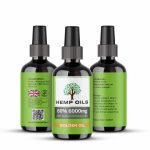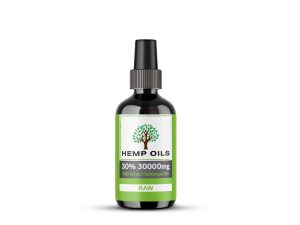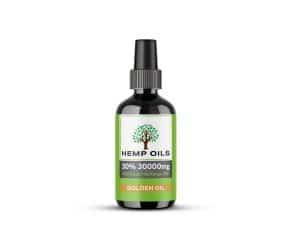Benefits of Hemp Oil and Its Production Process ===
Hemp oil, derived from the seeds of the hemp plant (Cannabis sativa), has gained popularity in recent years due to its numerous health benefits. Packed with essential fatty acids, vitamins, and minerals, hemp oil is known for its potential to support overall well-being. The production process of hemp oil involves extracting the oil from hemp seeds, refining it, and storing it properly to ensure quality and longevity. In this article, we will provide you with a step-by-step guide on how to make hemp oil from hemp seeds, as well as tips on refining and storing it. Additionally, we will explore the versatile uses of hemp oil in various health and wellness applications.
=== Step-by-Step Guide: Extracting Hemp Oil from Hemp Seeds ===
-
Harvest and dry the hemp seeds: After cultivating the hemp plant, allow the seeds to fully mature. Once the seeds have reached maturity, they should be carefully harvested. Remove any excess plant matter and let the seeds dry completely to ensure optimal oil extraction.
-
Decortication process: To extract hemp oil from the seeds, you will need to remove the hard outer shell, known as the husk or shell. This can be done using a decortication machine or manually by crushing the seeds with a mortar and pestle. The decorticated seeds are now referred to as hemp hearts.
-
Grinding and milling: Grind the hemp hearts using a coffee grinder or a mill specifically designed for seeds. This process helps to break down the seeds and release the oil. Ensure that the grinding is done carefully, avoiding excessive heat, which could damage the oil’s beneficial compounds.
-
Cold-press extraction: Place the ground hemp hearts in a press to extract the oil. Cold-press extraction is recommended to retain the oil’s nutritional value. Apply gentle pressure to squeeze out the oil, separating it from the solid residue. The resulting liquid is your hemp oil.
-
Filtering the oil: To remove any remaining impurities, strain the oil through a fine-mesh sieve or cheesecloth. This step ensures a purer final product, free from unwanted particles or solids.
-
Settling and decanting: Allow the oil to settle in a glass container for a few hours or overnight. After settling, carefully pour off the clear oil from the top, leaving behind any sediment at the bottom. Congratulations! You now have homemade hemp oil.
=== Refining and Storing Hemp Oil: Ensuring Quality and Longevity ===
To refine your homemade hemp oil and maintain its quality, consider the following steps:
-
Clarification: If your hemp oil appears cloudy or contains impurities, you can clarify it by gently heating it over low heat and then straining it through a coffee filter or cheesecloth.
-
Storage: Store your hemp oil in a cool, dark place, such as a pantry or refrigerator. Protect it from direct sunlight, heat, and air exposure to prevent oxidation and preserve its freshness. Use a dark glass bottle to minimize light exposure.
-
Shelf life: Hemp oil, when properly stored, can have a shelf life of up to one year. Regularly check for any signs of rancidity, such as a foul smell or a bitter taste. If these signs are present, it is advisable to discard the oil.
=== Utilizing Hemp Oil: A Versatile Ingredient for Health and Wellness ===
Hemp oil offers a multitude of uses in various health and wellness applications. Here are a few ways to incorporate hemp oil into your daily routine:
-
Culinary use: Hemp oil has a pleasant nutty flavor, making it a great addition to salad dressings, smoothies, or drizzled over cooked dishes. However, avoid using hemp oil for frying or high-heat cooking, as it has a low smoke point.
-
Skincare: Due to its moisturizing and nourishing properties, hemp oil can be used topically as a natural moisturizer or incorporated into homemade skincare products such as lotions, creams, and balms.
-
Dietary supplement: Hemp oil can be consumed as a dietary supplement, providing essential fatty acids, including omega-3 and omega-6, which are beneficial for heart health and overall well-being. Consult with a healthcare professional for appropriate dosage recommendations.
-
Haircare: Use hemp oil as a hair treatment to improve scalp health and add shine to your hair. Massage a small amount onto your scalp and hair, leave it on for a few minutes, and then rinse thoroughly.
-
Aromatherapy: Hemp oil can be used as a carrier oil for essential oils, enhancing their absorption and providing a soothing base for massages or aromatherapy practices.
Incorporating hemp oil into your lifestyle can offer a range of potential benefits, but it is always advisable to consult with a healthcare professional before making any significant dietary or skincare changes.
===
Now that you are equipped with knowledge about the production process of hemp oil, you can confidently create your own batch of this versatile and beneficial oil. By following the step-by-step guide, refining and storing the oil appropriately, and exploring its various uses, you can fully harness the potential benefits of hemp oil for your health and wellness journey. Remember to prioritize quality and freshness by using proper storage techniques and regularly checking for signs of rancidity. Enjoy the natural goodness of homemade hemp oil and explore its endless possibilities!




